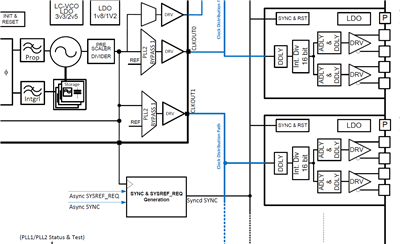Hi,
I am considering using two LMK04616 to distribute DCLK and SYSREF in an alternate manner in order to avoid as much trace crossing as possible. The SNAU22 document of multi-device synchronization does not address this configuration. I am wondering what could be the consequence of this? Again the reason I am want to configure the devices to distribute the required clock for a subclass 1 JESD204B converters, is so that I can keep the DEVICE CLOCK and SYSREF together. This will ultimately avoid any possible crossing that can increase the skew between the traces of these clocks.
Looking forward to some insight about my question.
Kind regards,
Gianfranco


